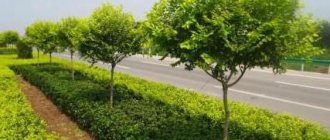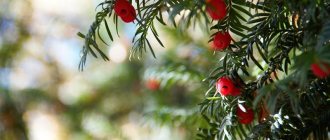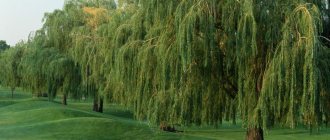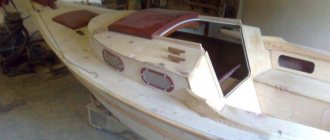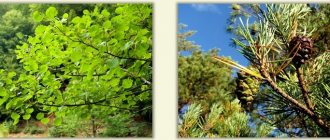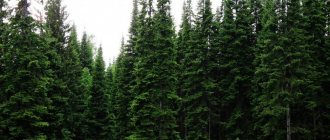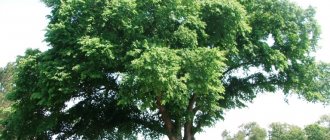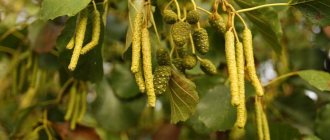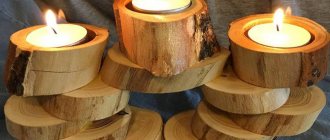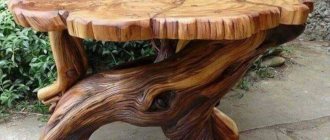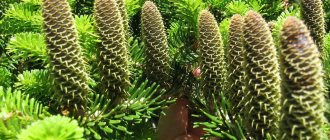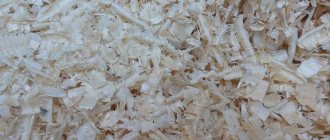A large assortment of chipboards makes it possible to choose the necessary material that is most suitable for solving the tasks. This could be furniture production or installation of floors and walls.
On the Internet and relevant catalogs for interior decoration, you can see many photos of chipboards, which are used in certain cases. Let's look at what it is, why it is needed and its advantages.
Chipboard (chipboard) is a sheet-type composite material, which is made by hot pressing of small wooden particles in the form of chips. In its production, a binding substance of non-mineral origin with various additives is used.
Popularity of chipboard
Chipboard is one of the most popular materials used in the manufacture of budget furniture or interior decoration. It allows you to carry out finishing and decorative work at the lowest cost.
Modern technologies make it possible to achieve significant strength and aesthetic appearance of this material. The result is a durable, smooth, perfectly flat surface.
It is possible to choose the required thickness, appearance and other individual characteristics.
Standard classification of particle boards
There is a lot of information on the Internet describing the standard classification of slabs, for example this P-A, 1, M, W, E1, 3500 × 1750 x 16, GOST 10632-89. But we will look at the slab from the other side and give more detailed and complete information.
Chipboard has become very widespread in our lives. It got its name because wood shavings are used in its production. But today modern technologies make it possible to make it not only from wood shavings, but also, for example, sunflower stems.
Therefore, the name may be particle board, but the product may be made from completely different non-wood materials.
Particle board is popularly called chipboard for short; in technical literature, the correct abbreviated name for this material is chipboard. By chipboard, technologists understand wood-laminated plastic. We will call the slab as popularly accepted - chipboard.
Variety in quality
There are three quality options available.
The highest quality is class 1. There is an ideal surface and compliance with certified performance characteristics. It is used in residential areas.
Next comes class 2, which may have various scratches and flaws on its surface. Can be used in economy class residential premises.
The worst quality is class 3, this material is used in technical rooms.
Suggested sizes
Regulatory documents suggest 18 gradations in length and 9 in width of this material. Thus, the length is from 1830 to 5680 mm, and the width is from 1220 to 2500 mm. The most common chipboard size is:
- width 2440 mm by length 1830 mm;
- width 2620 mm by length 1830 mm;
- width 2750 mm by length 1830 mm.
This is due to the convenience of their manufacture and transportation. In addition, there is their thickness, which ranges from 8 mm to 38 mm.
The most popular thicknesses are 16, 18 and 22 mm. Accordingly, the thicker the sheet, the stronger it is.
Chipboard: classification, selection and scope of application
When creating wood-composite materials, two main goals are primarily pursued. Find a use for low-quality wood or wood waste and obtain affordable, economical material. Chipboard fully satisfies these goals. Among all wood-based panels, this material is one of the most famous. This is determined by the wide scope of application; you can find products made from particle board in the form of furniture and building materials. In this article we will talk about the choice of chipboard, its features and scope of application. Subtleties of production Chipboard is an abbreviation for particle board. The material is made from crushed wood; illiquid wood, which is unsuitable for other work, is used as a raw material. It is crushed to the state of sawdust, then the sawdust is dried and mixed with formaldehyde resins, which combine this entire mass into monolithic slabs. The plates are pressed and treated at high temperatures. Chipboard looks exactly like this Production technology: the main stages of chipboard are made from waste from the woodworking industry - sawdust, small shavings. Non-commercial wood, re-grade wood, trimmings, etc. can be shredded. The production process is as follows: The chips are sorted by size - for normal chipboard strength, the board has several layers of chips of different sizes. Larger chips are placed inside, and smaller chips are placed around the edges. The multilayer material is more durable, and the fine chips are more aesthetically pleasing. The finished shaving carpet is pressed - crimped, checking the required parameters, and changes are made if necessary. A carpet of shavings is formed and fed into a press, where at high temperature and high pressure the shavings are transformed into a monolithic material. Cut to size and cool. They are sorted by grade, stored or sent for grinding, lamination and other processing methods. This is one technology, but it may change. For example, in the production of single-layer chipboard, large chips are additionally crushed, for which special equipment is used. Formaldehyde emission class If the amount of natural binder is insufficient (contained in sufficient quantities in conifers), synthetic binders are added to the chips during production. These are mainly phenolic and phenol-formaldehyde resins. Since they contain volatile substances that in large quantities have a harmful effect on humans (formaldehyde), a classification has been developed according to the degree of emission of this substance. Each batch of material, based on the results of laboratory tests, is assigned a specific class. E0.5 is the safest material that is approved for use in children's institutions. E1 is also considered safe and suitable for use in residential areas. Higher classes - E2, E3 and E4 can only be used for external work or as temporary materials (for example, when creating removable formwork for concrete). Not all materials are suitable for internal use. Also, during the production of chipboards, substances can be introduced into the chips that increase the moisture resistance of the boards. In the “original” version, chipboard does not get along well with moisture, so the usual material is not used for outdoor work, but is only applicable for rooms with normal humidity levels. By adding paraffin or its emulsion, water resistance increases significantly (15% warpage versus 22% or 33% for normal types of different classes). Types and scope of application Chipboards have many types. First of all, they are divided by area of application: Construction. Can be used both inside and outside. Must be durable, moisture-resistant, resistant to the spread of fungi and bacteria. To obtain these characteristics, additional components are introduced into the chips during mixing. It can be polished or unpolished - appearance is not always important. General purpose. Suitable for indoor use as it is not moisture and bioresistant. Slabs of this type are usually used to make furniture and are used for interior finishing work. Special. This material is made to special order. Upon request, the boards can have certain sizes or special properties (fire resistance, increased bio- or moisture resistance). The purpose of a chipboard is determined by its characteristics. As you understand, for each type of work it makes sense to choose a specific type of chipboard. This will allow you to optimize costs - not to spend too much, but also not to skimp on quality. Decorative materials based on chipboard General purpose boards can have a decorative coating. They are first sanded on special machines, then covered with a decorative coating: Melamine film, followed by a layer of varnish. The process is called laminating, and the material is called laminated. The letter “K” is added in front of the name. Melamine paper, but on machines under pressure and at high temperatures. The film is glued (rather, fused) at temperatures from 150 °C to 210 °C. The process is called lamination, the material is laminated, the letter “L” is added to the name - laminated chipboard. This coating significantly increases water resistance and improves appearance. Such boards are used for making furniture and for interior decoration. Veneer. Veneer is the finest cut of natural wood. It is glued to the surface of the plate, then covered with a layer of varnish. In appearance it is indistinguishable from natural wood; it is used for making furniture and for interior decoration. Laminated chipboard For the uninitiated, it can be difficult to understand which is better: chipboard, laminated chipboard or veneered boards. The worst option is laminated chipboards. The varnish is quickly erased, then the thin paper with the applied pattern is wiped. The product is damaged and cannot be restored.
The other two types - laminated chipboard and veneered chipboard - are approximately the same in terms of coating reliability, but veneered chipboard has lower moisture resistance and is also much more expensive. Despite the fact that modern technologies make it possible to very accurately reproduce the surface of wood, stone, and other natural materials, paying a high price for veneer coating is not very reasonable.
Dimensions, characteristics, classification The dimensions of chipboard sheets are standardized by GOST, as are the maximum deviations for each of the values. But many enterprises form their specifications, increasing the permissible deviations. Therefore, when purchasing a batch, do not be lazy to measure several sheets to choose from. So, the dimensions of the chipboard boards are as follows: Thickness: 10, 13, 16, 19, 22, 25 mm. The maximum deviation for ground ones is 0.3 mm, for unpolished ones from 0.4 mm to 0.7 mm depending on the thickness. The length, width and thickness of the sheet are determined by GOST Width: 1220, 1500, 1750, 1830 mm. Permissible deviations are 3 mm. Height: from 1800 to 3500 mm in increments of 10 mm, dimensions may differ from nominal by 5 mm. In terms of height, there is usually not such a large assortment. Most often you can find 2440, 2750 and 3060 mm. There are also “halves” in width - 910 mm. Grade Depending on the quality of the composite material, chipboard is divided into the following grades: 1st grade. Ideally smooth surfaces and edges. No foreign inclusions, chips, delaminations, or other defects. Most often, most of the first grade is sent for further processing - grinding, laminating, etc. 2nd grade. There are some minor defects. These may be cracks, irregularities, deviations in thickness within a small range, or delamination of the composite. Not all of these shortcomings together, but only some. The higher the density and the more homogeneous the structure, the stronger and stronger the slab. Non-grade products, or, in other words, defective products. Significant defects listed above. It can only be used as removable formwork, and even then not for all areas. Whatever the sellers claim, significant defects are defective and therefore cheap sheets. And they should not be used for construction. Neither for sheathing, nor as sheathing. Unless in a barn for partitions, and even then... Brand There is also a classification of chipboard as a brand. There are only two of them: P-A. More tensile and bending strength, has less roughness, and is less prone to swelling and warping when the standard humidity is exceeded (the degree of deformation from water is 22%). There are two brands and the best one is P-A P-B. More fragile, not so smooth, has lower water resistance (the degree of warping from high humidity is 33%). The P-A grade of chipboard is worth buying for those jobs in which appearance is important or strength requirements are high. In other cases, it is better not to spend extra money. Number of layers Initially, monolithic particle boards were created. They consisted of one layer. The material was not very durable, flaked at the ends, and had an unpresentable appearance. But it was used because single-layer chipboards have good characteristics at a low price. A few decades later, after numerous experiments, they began to make three-layer chipboards. Large chips are selected into the middle layer, and the outer two are formed from small chips. In this case, the material is monolithic, there is no separation of layers. This allows you to simultaneously increase strength (not so brittle when bending), improve appearance (small chips make it possible to sand smoothly) and not raise the price too much (due to the use of large chips). So three-layer chipboard can be called the optimal choice. Three-layer material is more durable. But the loose inner layer imposes restrictions on application. There are also five-layer particle boards. But they are expensive, rarely appear in stores, and are almost impossible to find in markets. This is one of the types that is made to order. Used in carriage building and other “serious” industries. Water resistance Initially, chipboards had low water resistance and could not be used in damp rooms or outside buildings. To improve this characteristic, paraffin or paraffin emulsion was added to the mass. The material is usually called moisture-resistant chipboard, and its swelling from moisture is 15%. Standard characteristicsMoisture-resistant building chipboard is used for external cladding of frame houses, as a continuous sheathing for some types of roofing materials. Laminated moisture-resistant chipboard is used to make furniture for the bathroom and kitchen; countertops are made from thick slabs. How to choose particle boards We are talking about choosing a “regular” unfinished board. You should immediately pay attention to the markings. It can be applied to the side edges or placed on the pack. Based on the labeling (brand, grade, water resistance), choose the material that suits you in terms of its characteristics. If there is no marking at all, this is a bad sign. All self-respecting manufacturers put identification marks on their products. Whether or not to buy unknown material with unclear characteristics is up to you. Next, we need to evaluate the following parameters: We check the appearance: chips, peeling, presence of surface defects. Color. The best chipboard is a light beige, maybe slightly grayish tint, without spots or transitions. It’s not bad if it is slightly reddish - this means that rotted wood chips were used. This does not affect the strength characteristics, but it is better not to use such material in damp rooms or for exterior decoration. The worst option is a dark color. This is either a sign that the technology was violated (overexposed under pressure or overheated), or a lot of bark was used. Both cases degrade performance. The layers and different shades of the chips are clearly visible here. Green is a sign of water resistance. We evaluate the porosity of the slab. Take keys, a piece of wire, or any other solid object and try to stick it into the ends of the slab. Material of normal quality does not react in any way to these actions. If an item causes delamination, look for a more durable material. The formaldehyde emission class must be indicated on the labeling or in accompanying documents. If you don't have it, you'll have to rely on your sense of smell. With normal emission, at a distance of a meter, the smell of chemicals is almost imperceptible. If it is strong, this material is not suitable for interior work. In three-layer slabs, larger chips should be located inside. This is clearly visible on the edge of the slab. Even in this form, there should be information about the batch. Differences in thickness are also important, but it is difficult to evaluate them on a separate slab. You can “walk” along the edge of several slabs with a drawing pen or micrometer. But this only gives a rough idea of the thickness at the edges. It is not so easy to check deviations in the plane of the slab. The only thing you can look at is a stack of slabs. If it is skewed, there is a deviation in thickness somewhere.
Moisture resistant board
One of the popular ones is a moisture-resistant chipboard, which is made from cheap types of wood (spruce, pine), or rather their waste. They are crushed and paraffin or a special emulsion is added to the adhesive. As a result, they are more protected from moisture from the external environment.
But this does not mean that it can be used in water, as it will swell. For greater ease of identification, in cross-section it has a green tint (this is a dye added to the gluing emulsion).
Furniture board
Special furniture chipboards are well suited for making furniture. These are medium-density MDF boards, which are made by dry pressing at high pressure and high temperature. They are distinguished by their uniformity and high strength.
Naturally, they are inferior to natural wood, but their price is much lower. Laminated sheets have a coating of excellent quality and aesthetic appearance, but professional equipment is required to process them.
Advantages and disadvantages
Among the positive aspects are the following:
- Low price. Perhaps the most important advantage is that it can be used both in construction and for making furniture;
- Strength;
- Hold nails and screws satisfactorily without deformation;
- High resistance to moisture.
But, as in any other case, there are some disadvantages. The first, of course, is the use of formaldehyde resins in production. The environmental friendliness of the material is clearly not up to par. But here it is fair to note that there are two types of chipboard: E1 and E2.
The first among them meets the standards and is not so harmful, as evidenced by the fact that it is approved for use in the manufacture of various children's furniture. Panels made in German and Austria are traditionally considered the most environmentally friendly.
Another disadvantage is the inability to use the material for fine processing (for example, obtaining various shaped parts) due to its hardness. But this minus is not particularly critical.
A few more words about the advantages and disadvantages of the material:
Floor slabs
The most suitable option is shunted moisture-resistant chipboards for the floor. They have sufficient strength and moisture resistance, which allows them to withstand appropriate loads and not be exposed to condensation.
However, care should be taken in advance to ensure that the floor surface is dry and its structure is ventilated.
Application area
Chipboard is used to make furniture
GOST allows the use of chipboard in various areas subject to safety conditions.
In addition to furniture production, chipboard panels are used for the production of:
- removable formwork for casting the foundation;
- skating rink walls;
- covering floors and ceilings;
- garden houses and outbuildings;
- fencing for construction sites;
- decorations;
- interior doors.
- transport packaging;
- equipment construction;
- cladding of walls and partitions of residential and public premises;
Chipboard is a universal material that, when used correctly, is durable.
Advantages of chipboard
Their advantages include the following qualities:
- homogeneity of the material, complete absence of knots and voids;
- easy to process and install;
- sufficiently strong and durable if their technical recommendations for use are followed;
- are environmentally friendly material.
As you can see, they are rightfully considered one of the popular and sought-after finishing materials. When purchasing, pay attention to the quality of the products offered, this will save you from possible defects during operation!
